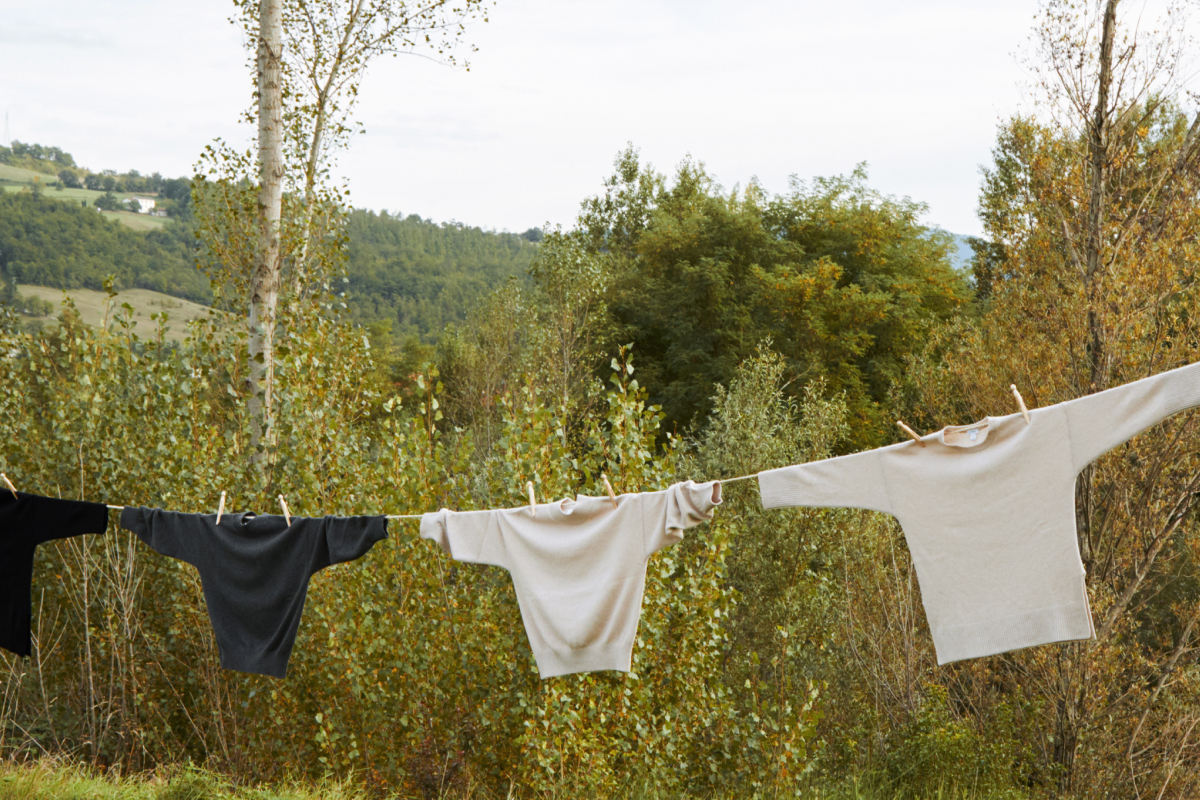In the fashion space, “sustainable” is a label that is used in a rather binary way. You’re either heralded as a sustainable fashion brand, or you’re not. There is little room for nuance in between.
It is notable that this dichotomy is not applied in other industries, such as aviation or automotive. Toyota and Tesla are generally not called “sustainable car companies,” despite being pioneers in the space of hybrid and electric vehicles, respectively.
For this reason and many more, we believe that the very concept of “sustainability” needs questioning in our industry. What do we mean when we say sustainable fashion brand? Who decides which brands are deemed sustainable? And is there a way we could reframe this conversation that would bring more brands on board, and in doing so, decrease the impacts of the industry as a whole.
At Cuyana, we view sustainability as a journey, not a destination. Because there is no shared definition or set of metrics for sustainability, applying the label in such a reductive way—you’re either sustainable or you’re harmful—is not helpful. There are certifications, such as Leather Working Group and OEKO TEX, which measure sustainability based on production processes, There has to be a better way.
There are countless nuances, trade-offs, and choices that a brand makes, from sourcing materials and manufacturing to packaging and distribution. Where one brand might be wowing customers and press in a very visible way, such as in how they package their products or by launching a repair and resale scheme, another might be quietly working on how to eliminate plastic from the harder-to-reach areas of the supply chain. All of these steps are meaningful, but these tradeoffs and choices are too complex to be viewed as zero sum.
This is not an apology for blatant greenwashing, nor is it suggesting that sustainability can be a choose-your-own adventure game with no standards or accountability. But the predominant view of sustainability as a fixed destination means that constructive conversations about where a brand is at—including, yes, where they may have room for improvement—are not being had. Less-established brands may even be scared to try, lest they be “called out” for falling short.
In reality, there is no way to finally “check” the sustainability box and move on. It is an active, evolving, dynamic commitment that changes with time. It requires humility and diligence. If you think you’ve completed the job, you’re probably not paying enough attention.
At this stage in our journey, we’re proud to be working with ten different certification schemes, including the Leather Working Group and GOTS (worldwide leading textile processing standard for organic fibers), alongside many other steps. (For more specifics and detail on Cuyana’s sustainability journey, read the next post in this series here.) But at our core, Cuyana believes that the best way to be a sustainable brand is to keep as many products as possible out of the supply chain.
Our philosophy “fewer, better” means creating products that promise longevity for our customers, from the durability of the materials and quality of the craftsmanship, to the timeless designs that will feel current for years to come. We are intentional about the entire lifecycle of each product we sell, considering where it might be worn long after it leaves our warehouse or store. This emphasis means that sometimes we may choose not to invest in the latest buzzy textile or newest certification scheme because our efforts are focused elsewhere.
In reframing the conversation about sustainability, we might even boldly suggest that there is no such thing as a sustainable brand. If you are creating products, you are putting inputs into a system that’s already overloaded. The journey then is to think deeply about whether and when to do that. To reduce and mitigate impacts wherever possible. And to create products that can be loved and cared for by people for years to come.

Leave a Reply